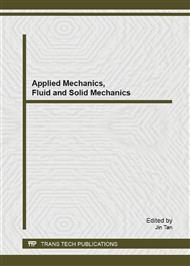p.240
p.247
p.253
p.259
p.263
p.269
p.277
p.283
p.290
Multiscale Model of Shape Rolling Taking into Account the Microstructure Evolution - Schedule Design by Finite Element Method
Abstract:
The material properties are strongly depended on the microstructure. Recently, for modeling and prediction of microstructure evolution during the forming processes a cellular automata method is used. Combination of several methods in multiscale model allows to extend the possibilities of each method and obtain more reliable results, which are close to the real conditions. The objective of this study is development of multiscale model of microstructure evolution during the shape rolling process and use it for simulation of rolling of 5 mm round bars. Model uses for calculations the finite element (FEM) and cellular automata (CA) methods. Modeling consists of three stages: design of the shape rolling schedule with the definition of shape and sizes of grooves (FEM simulation of each pass, starting from the last pass), FEM modeling of shape rolling in the proper sequence of the passes, modeling of microstructure evolution by frontal cellular automata (FCA). Stages (especially the last two) can be repeated several times to optimize the technology in view of final microstructure. The paper presents the first stage of modeling, which includes design and selection of grooves scheme with used the finite element method. The last six passes were modeled. The rolling scheme obtained from the modeling in the next stage is simulated by FEM to obtain thermomechanical parameters of the process. Then, temperature, strain and strain rate distributions in bar cross-sections, rolling time and inter-pass time will be used as input data for modeling by FCA.
Info:
Periodical:
Pages:
263-268
Citation:
Online since:
December 2013
Authors:
Price:
Сopyright:
© 2014 Trans Tech Publications Ltd. All Rights Reserved
Share:
Citation:


